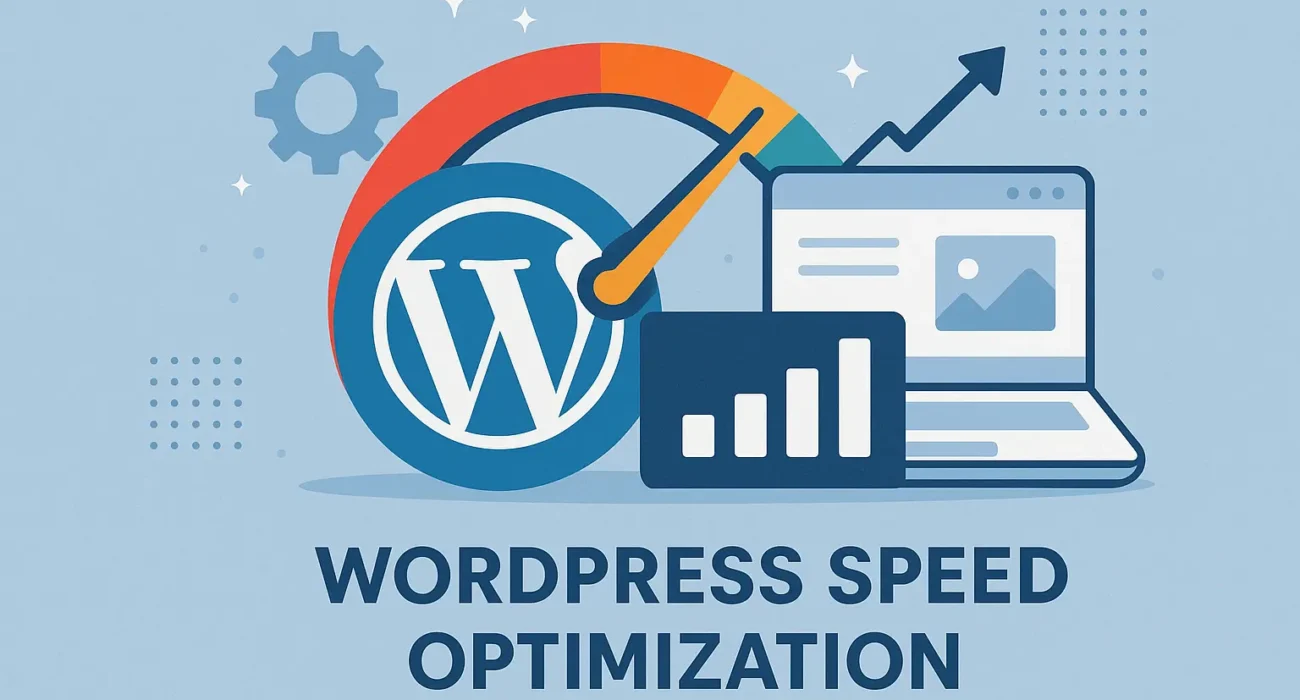Introduction: Why WordPress Speed Matters in 2025
In the fast-paced digital world of 2025, website speed is no longer optional—it’s critical. Slow-loading websites hurt your SEO, bounce rates, conversions, and user experience. With Google prioritizing Core Web Vitals, optimizing your WordPress site for speed can directly impact your rankings and revenue.
Whether you’re running a blog, ecommerce site, or agency portfolio—this guide is packed with expert tips, lesser-known hacks, and top plugins to supercharge your WordPress performance.
1. Audit First: Know Your Current Speed
Before optimizing, test your site speed with:
Look for these metrics:
- Largest Contentful Paint (LCP) under 2.5s
- First Input Delay (FID) under 100ms
- Cumulative Layout Shift (CLS) under 0.1
2. Use Lightweight Themes & Plugins
- Choose themes optimized for speed like GeneratePress, Astra, or Blocksy
- Avoid bloated multipurpose themes
- Delete inactive or unnecessary plugins
Hack: Don’t just deactivate plugins. Remove them entirely if not in use—they still load behind the scenes sometimes.
3. Implement Caching (Must-Do)
Use caching plugins to reduce server load:
- WP Rocket (premium but powerful)
- LiteSpeed Cache (best for LiteSpeed servers)
- W3 Total Cache or WP Super Cache (free options)
These cache pages, minify files, and preload assets—improving time to first byte and page load.
4. Minify HTML, CSS & JavaScript
Minifying removes unnecessary characters from your code. Most caching plugins include this, or use:
- Autoptimize – Best for CSS/JS optimization
- Asset CleanUp – Disable scripts on unused pages
2025 Trick: Combine and delay loading of non-critical JavaScript to speed up render time.
5. Optimize Your Images (Automatically)
Images are often the biggest culprit of slow pages. Use:
- ShortPixel or Imagify – Compress without losing quality
- WebP format – Serve modern images for faster loading
- Lazy Loading – Load images only when scrolled into view
WordPress 6.x+ supports native lazy loading, but double-check theme compatibility.
6. Use a Content Delivery Network (CDN)
CDNs deliver content from the server closest to your visitor.
Top CDN Choices in 2025:
- Cloudflare – Free plan is powerful
- BunnyCDN – Fast and affordable
- StackPath – Reliable for global delivery
7. Database Optimization
Your WordPress database grows over time and can slow you down.
- Use WP-Optimize or Advanced Database Cleaner to:
- Remove post revisions
- Delete spam comments
- Clean transient options
Pro Tip: Schedule weekly auto-cleanups for a leaner DB.
8. Mobile-First Optimization
Most traffic is mobile. In 2025, speed + mobile UX = SEO win.
- Use responsive designs
- Eliminate full-screen popups
- Avoid large media that doesn’t scale down
9. Use Critical CSS and Defer JS
Load above-the-fold CSS first, defer the rest. Tools like:
- WP Rocket (Critical Path CSS)
- Flying Scripts (Defer specific JS)
Let your page render the most important content first—fast!
10. Upgrade to PHP 8.2+ and Use Latest WordPress
Outdated PHP or WordPress core? That’s a speed (and security) risk.
- Update PHP to 8.2 or higher
- Use the latest WordPress version
- Check theme/plugin compatibility before updating
Bonus: Quick Wins Checklist
| Task | Time | Impact |
|---|---|---|
| Install caching plugin | 5 mins | 🔥🔥🔥 |
| Compress all images | 15 mins | 🔥🔥 |
| Clean up plugins | 10 mins | 🔥🔥 |
| Update PHP | 10 mins | 🔥🔥🔥 |
| Use CDN | 10 mins | 🔥🔥 |
Conclusion: Fast Site = Higher Conversions
Website speed is no longer just a “techie” concern. In 2025, it’s directly tied to your SEO, user experience, and business growth.
Use the plugins, tools, and tricks above to stay ahead—and keep your visitors engaged, not bouncing.
Need Expert Help?
Want us to audit and turbocharge your WordPress site? Contact our speed optimization team for a free consultation.


